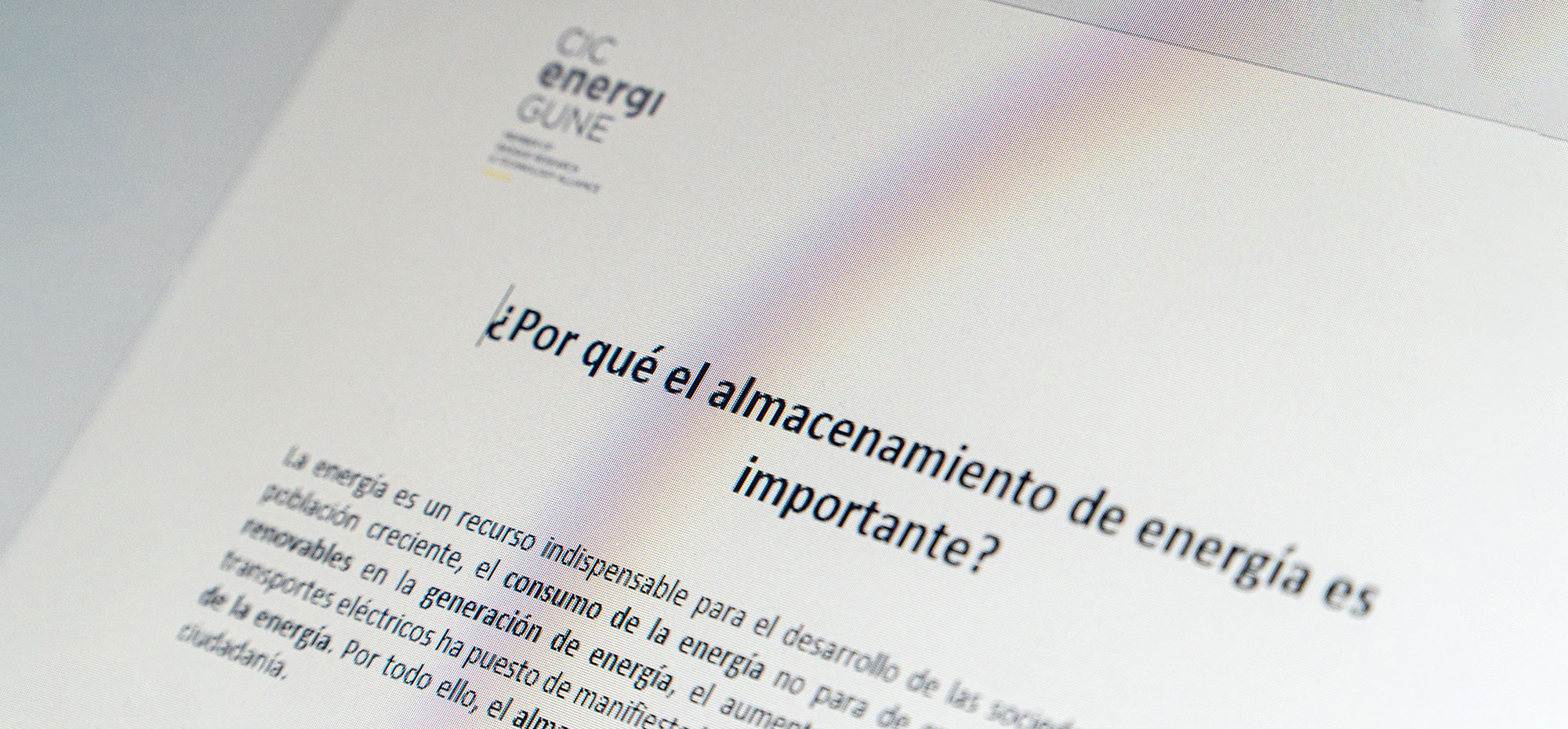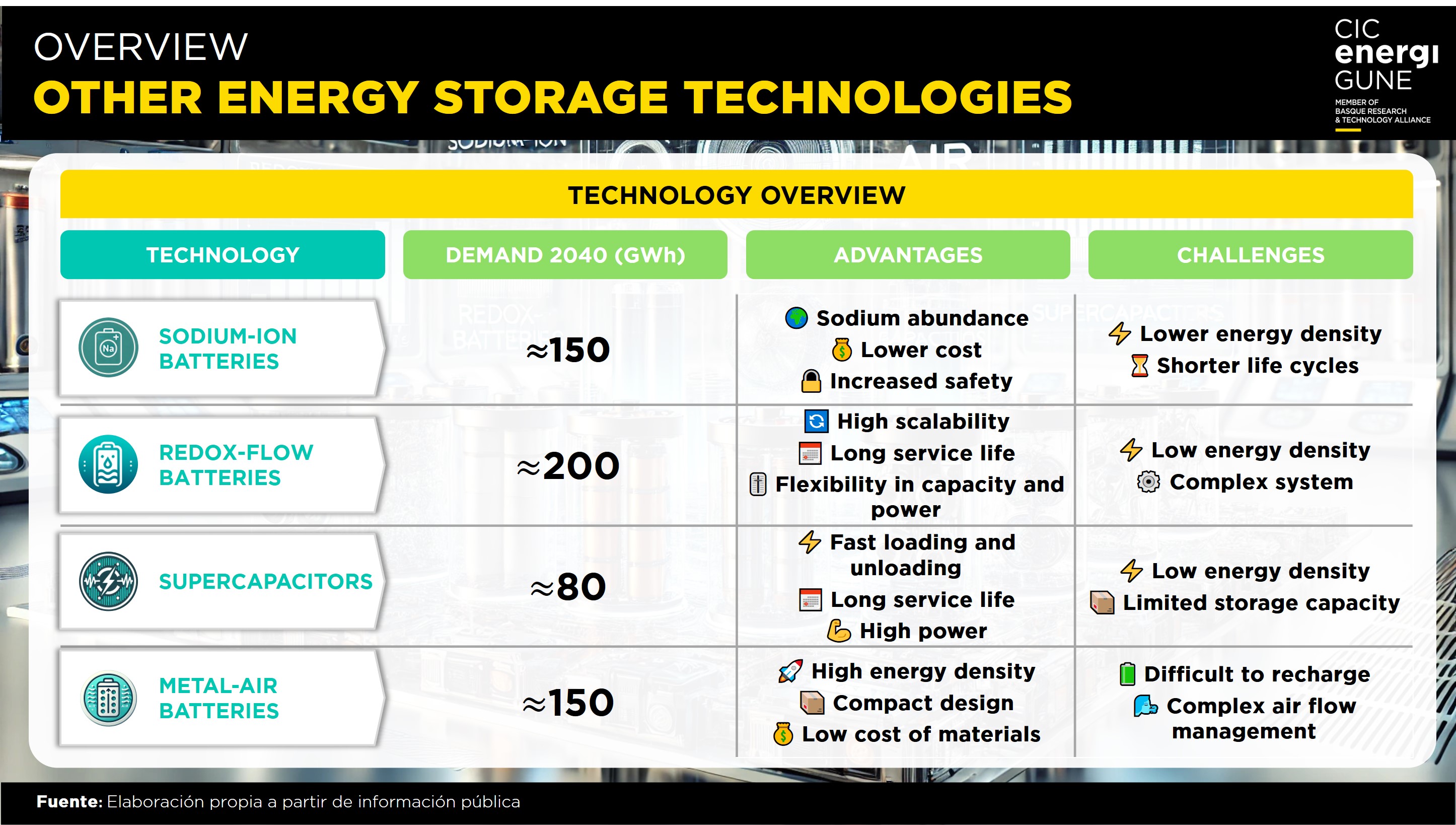The growing global demand, driven by the electrification of various sectors and the need to store renewable energy efficiently, is leading to the search for alternative technologies that can complement or even surpass lithium in specific applications.
There are several potential alternatives that can complement lithium-based solutions. Below, we summarize some of them, analyzing their properties, characteristics and possible applications:
Sodium-ion batteries
Sodium-ion batteries are emerging as a promising alternative to lithium-ion batteries, especially in applications where cost and sustainability are key factors. Sodium is a significantly more abundant and cheaper element than lithium, which not only reduces production costs, but also reduces the environmental impact of raw material extraction and processing. In addition, sodium-ion batteries have a significant safety advantage, as they have a lower risk of overheating and do not suffer from the flammability problems associated with lithium batteries.
These batteries, although still at a less advanced stage of development than lithium batteries, are proving to be particularly suitable for stationary storage applications where energy density is not as critical. For example, in backup systems for renewable energies or in industrial applications where space is not a constraint, sodium-ion batteries can offer a more economical and environmentally friendly solution. They are also being considered for use in light transport solutions (scooters, motorcycles, disabled mobility...) as well as, in some cases, for cars.
However, their lower energy density compared to lithium-ion batteries makes them less competitive in applications where high energy density is required, such as long-range electric vehicles. Future challenges include improving the energy density and durability of these batteries to broaden their range of applications and make them more competitive in the global market.
Redox Flow batteries
Redox flow batteries represent an innovative and highly scalable solution for energy storage, especially in large-scale applications. These batteries work by circulating liquid electrolytes through electrochemical cells, where electron transfer occurs that stores and releases energy. One of their main advantages is the ability to scale both storage capacity and power independently, allowing the system to be adjusted according to the specific needs of the application.
These batteries are particularly suitable for large-scale renewable energy storage, such as in solar or wind power plants, where they can store large amounts of energy to be released when demand is high or when production is low. In addition, redox flow batteries have an exceptionally long service life, as the energy storage process does not involve chemical reactions that degrade the internal materials over time, allowing thousands of charge and discharge cycles without significant loss of performance.
However, the low energy density of these batteries and the complexity of the system, which requires additional equipment for electrolyte circulation, limit their application in smaller spaces or in systems that require high mobility. Going forward, the challenges focus on improving efficiency and reducing component costs to make these batteries a more affordable option for a wider variety of applications.
Supercapacitors
Supercapacitors are energy storage devices that use an electrostatic field instead of chemical reactions to store charge. This allows extremely fast charge and discharge times, making them ideal for applications that require fast energy delivery, such as regenerative braking in electric vehicles, power backup systems for power grids, and in electronic devices that require high-power bursts.
Unlike batteries, supercapacitors can withstand a much greater number of charge and discharge cycles without significant loss of performance, giving them an exceptionally long service life. In addition, they are capable of operating over a wide temperature range and are less susceptible to failure due to overcharging or overheating. However, their energy density is significantly lower compared to lithium batteries, which means they cannot store as much energy in an equivalent size or weight.
The future of supercapacitors is focused on improving their energy density to expand their use to applications where space and weight are more limited. New materials and hybrid technologies that combine the advantages of supercapacitors with the storage capacity of batteries are also being explored, which could open up new possibilities for their use in a wider range of sectors.
Metal-air batteries
Metal-air batteries, such as zinc-air batteries, represent one of the most promising alternatives for energy storage due to their high energy density and ability to be lighter than other conventional technologies. These batteries generate electricity by oxidizing a metal (such as zinc or aluminum) with oxygen from the air, which eliminates the need to store an oxidizing agent inside the battery and allows for a more compact and lightweight design.
The high energy density of metal-air batteries makes them particularly attractive for applications that require long-term energy storage and prioritize capacity by weight, such as electric vehicles and stationary storage systems in remote areas. For example, zinc-air batteries are already used in medical devices such as hearing aids because of their safety, low cost and long-term storage capacity.
However, these batteries face several technical challenges today. One of the main problems is the difficulty of recharging metal-air batteries efficiently, as the oxidation reaction that produces electricity is difficult to reverse. In addition, air flow management and protection against environmental contamination, such as humidity and carbon dioxide, are essential to maintain the efficiency and lifetime of these batteries.
The future of metal-air batteries depends on overcoming these technical challenges and on the possibility of developing more efficient recharging systems. If these hurdles are overcome, they could revolutionize energy storage in energy-intensive applications, offering a competitive alternative to lithium in sectors such as electric mobility and large-scale stationary storage.









